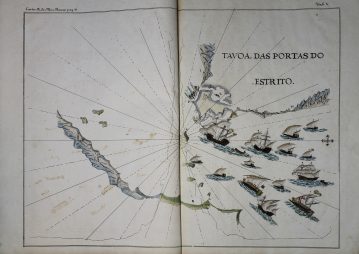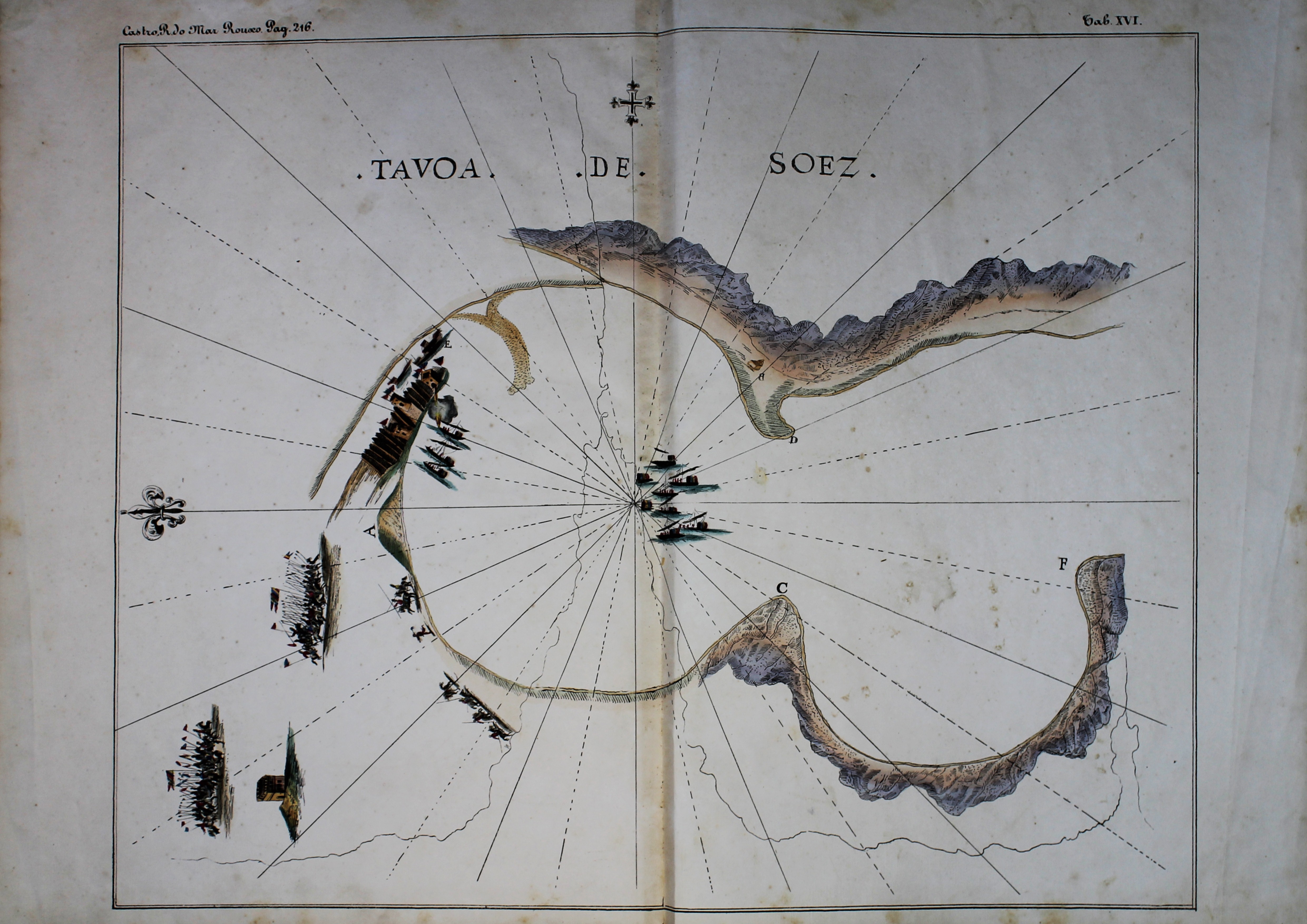Roteiro em que se contem a viagem que fizeram os Portuguezes no anno de 1541. Partindo da nobre Cidade de Goa atee Soez, que he no fim, e Stremidade do Mar Roxo. Com o sitio, e pintura de todo o syno Arabico. Tirado a luz pela primeira vez do manuscrito original, e acrescentado com o Itinerarium Maris Rubri… TWO VOLUMES, TEXT & ATLAS.
Castro, João de (1500-1548).
Synopsis
Extremely rare text and atlas in two volumes. A rare account of this 16th century sea voyage around the Arabian Peninsula. The present work is the first appearance of this journey in print, published from the original logbooks of João de Castro’s voyage. We have found only one copy of this work in international auction trade, from 1964.
João de Castro was a Portuguese nobleman and fourth Viceroy of Portuguese India. He was called Castro Forte (“Stronghold” or “Strong Castle”) by the poet Luís de Camões. In 1535 he accompanied Dom Louis to the siege of Tunis, where he had the honour of refusing knighthood and reward bestowed by the Emperor Charles V. In 1538 he left for India in the company of his uncle Garcia de Noronha, and on his arrival at Goa went off for the relief of Diu. In 1540 he served on an expedition to Suez under Estêvão da Gama (the son of Vasco da Gama and then Viceroy of Portuguese India), by whom his son, Álvaro de Castro, a child of thirteen, was knighted, as a compliment to him. Estêvão da Gama went on an expedition to the Red Sea with 12 large galleons and carracks, and 60 galleys, on 31 December 1540; D. João de Castro being the captain of a galleon. This expedition to Suez was truly remarkable, and João de Castro made a detailed roadmap of it, with maps, calculations, pictures and detailed notes from the coasts of the Arabian Peninsula as of those of the countries of today’s Somalia, Eritrea, Ethiopia, Sudan and Egypt, as far as Suez and to several ports in the shores of the Sinai Peninsula, all included in the Roteiro do Mar Roxo, which was offered to Prince Louis. Eight months later he returned to Goa on 21 August, having acquired by the experiences made during the expedition, the name of a philosopher. “I pay great attention to eclipses of the moon,” he wrote, “as also to longitudes and latitudes, fishes, seaweeds, currents, winds, the colour of the Red Sea, and every detail that might concern the art of navigation”, to the delight of his friends Pedro Nunes and Prince Louis, who had furnished him with special instruments and other assistance for his voyage.
D. João de Castro called for the need of the co-ordination between the observation and reason, in the case of the navigation: “This science of navigation is poorly distributed among the men, or because they act like idiots, which for a long time and through continuous exercise they reach many particulars, though with all their works are never to gain authority in their office, or those who have no experience, but with much learning and great practice in the science of mathematics, reached the shadow of this art but not the true science.” It is in overcoming this separation that rooted the ways of science, which reaches an understanding with no epilogue, an open knowledge, in constant motion approach, not compatible with the spirit of the system. João de Castro tell us that the knowledge of science is ” to arrive at the truth”, that science is “closer to the truth and not the absolute truth”: “We need to consider how much we owe for teaching us how not to ignore the fact that we can be closer to the truth, as are human things that men can learn (…). Not only to be expected by virtue of reaching the truth, but also get close to her.”
In 1543 he was named commander of a fleet; and in 1545 he was sent to India to assist Martim Afonso de Sousa, who had been dismissed of the viceroyalty.
Bibliographic references: Innocencio III, 345; Phillips 9500; Yerasimos 197; Henze I, 524.








